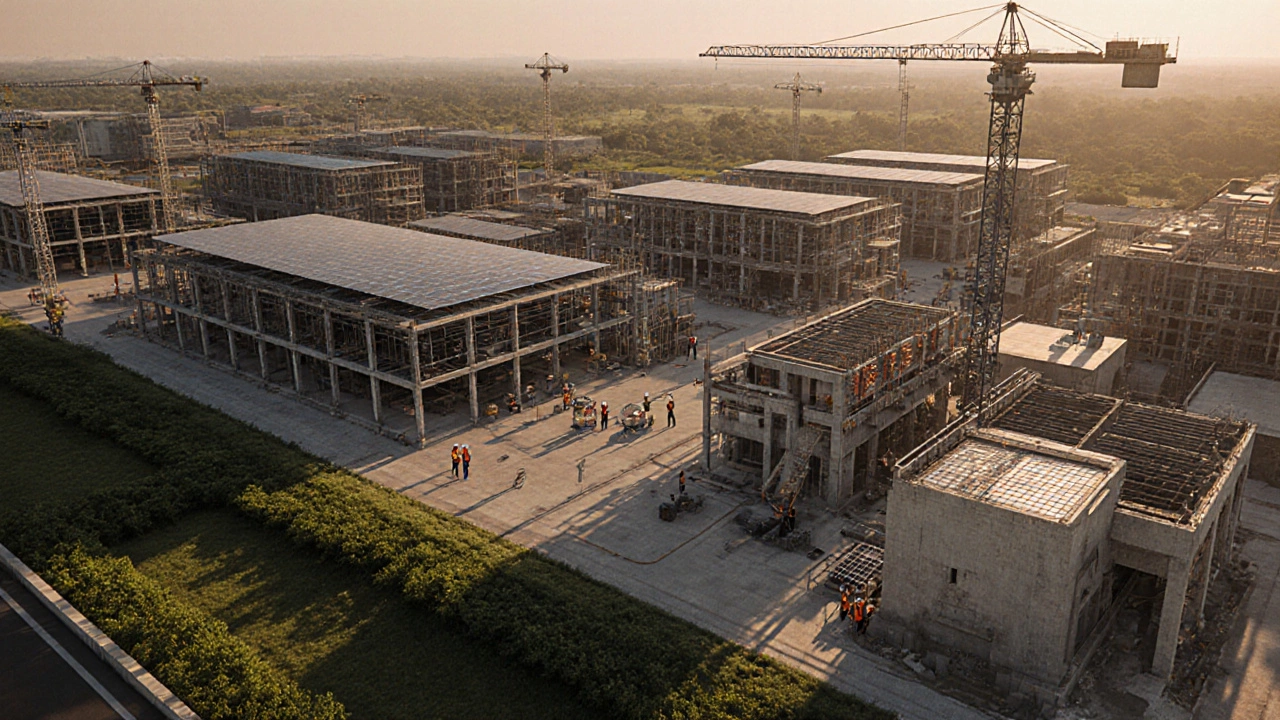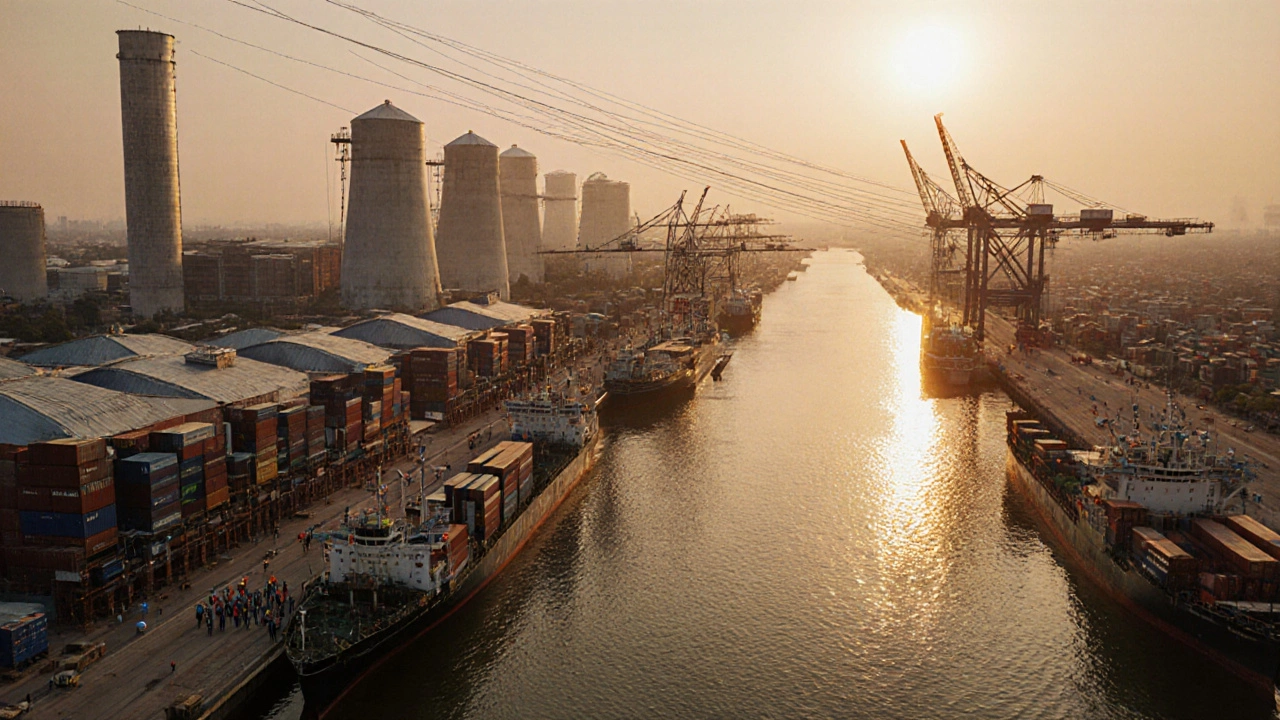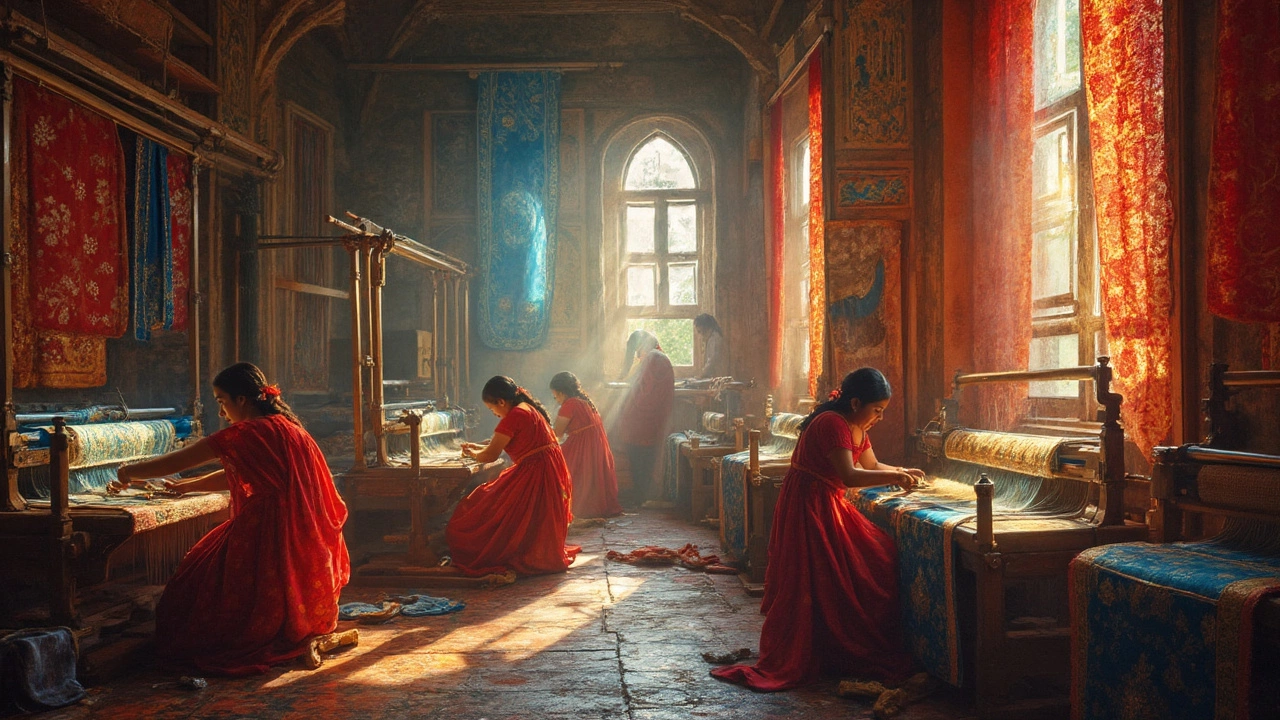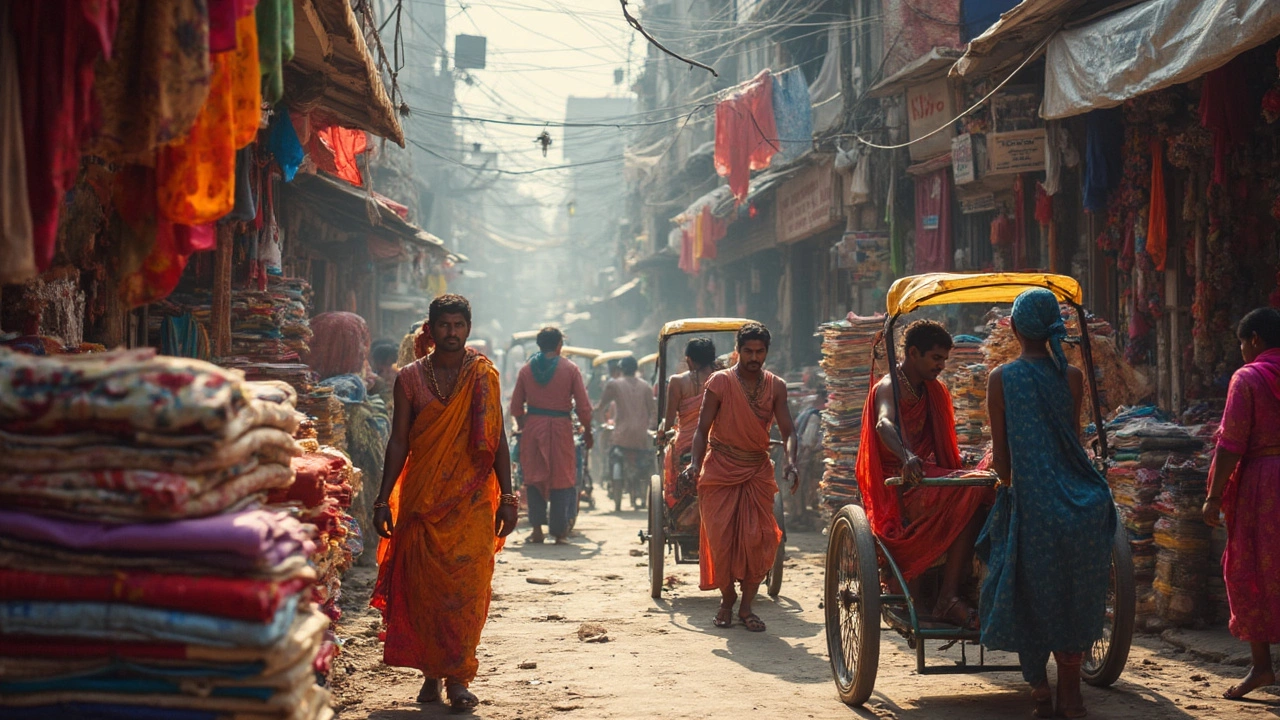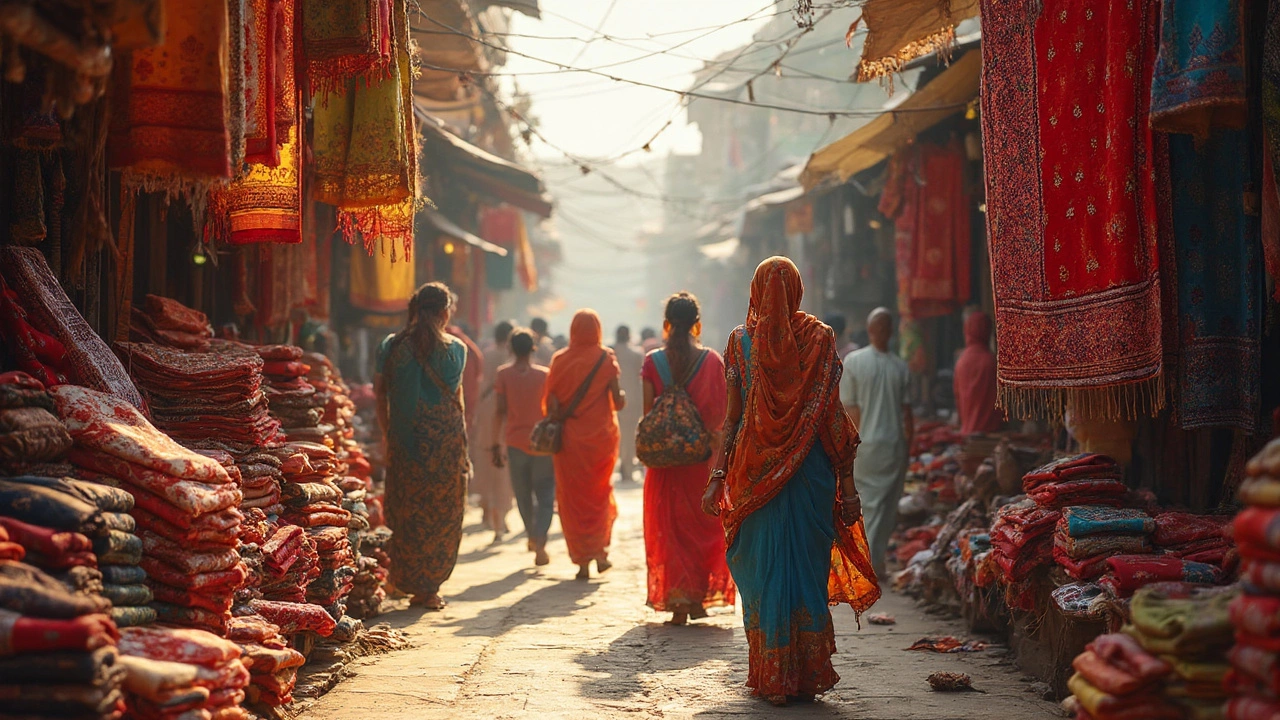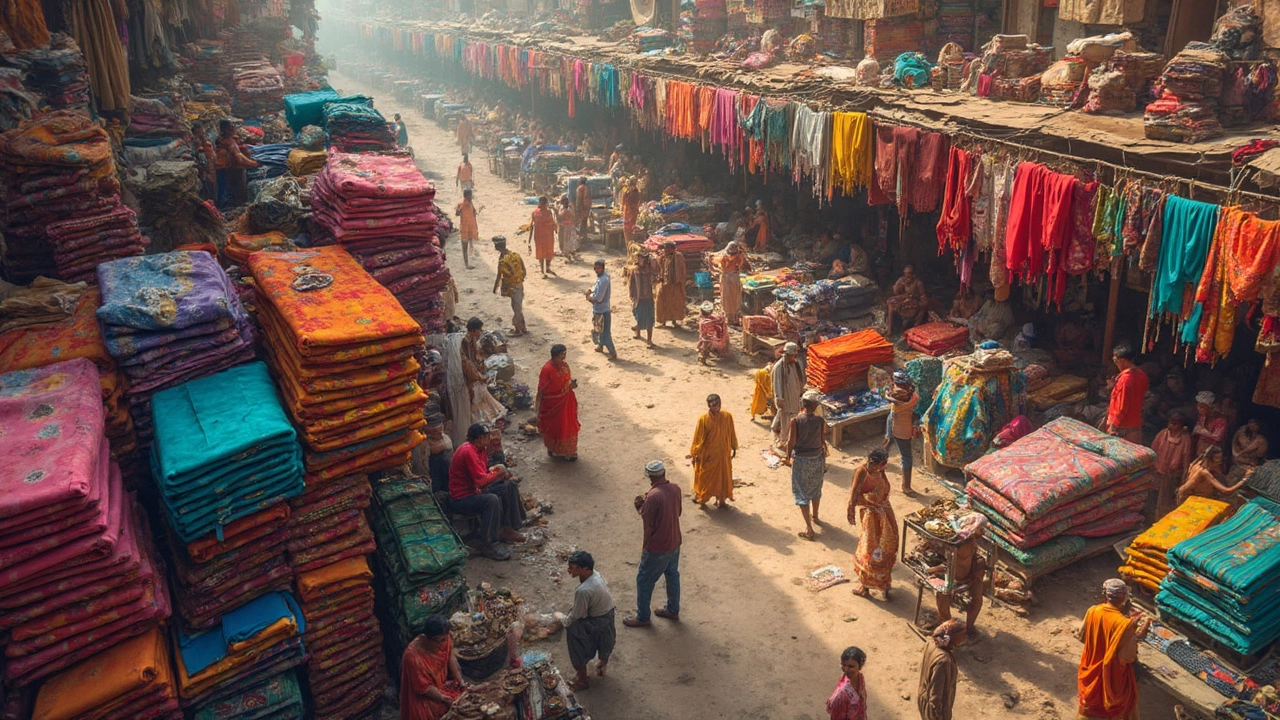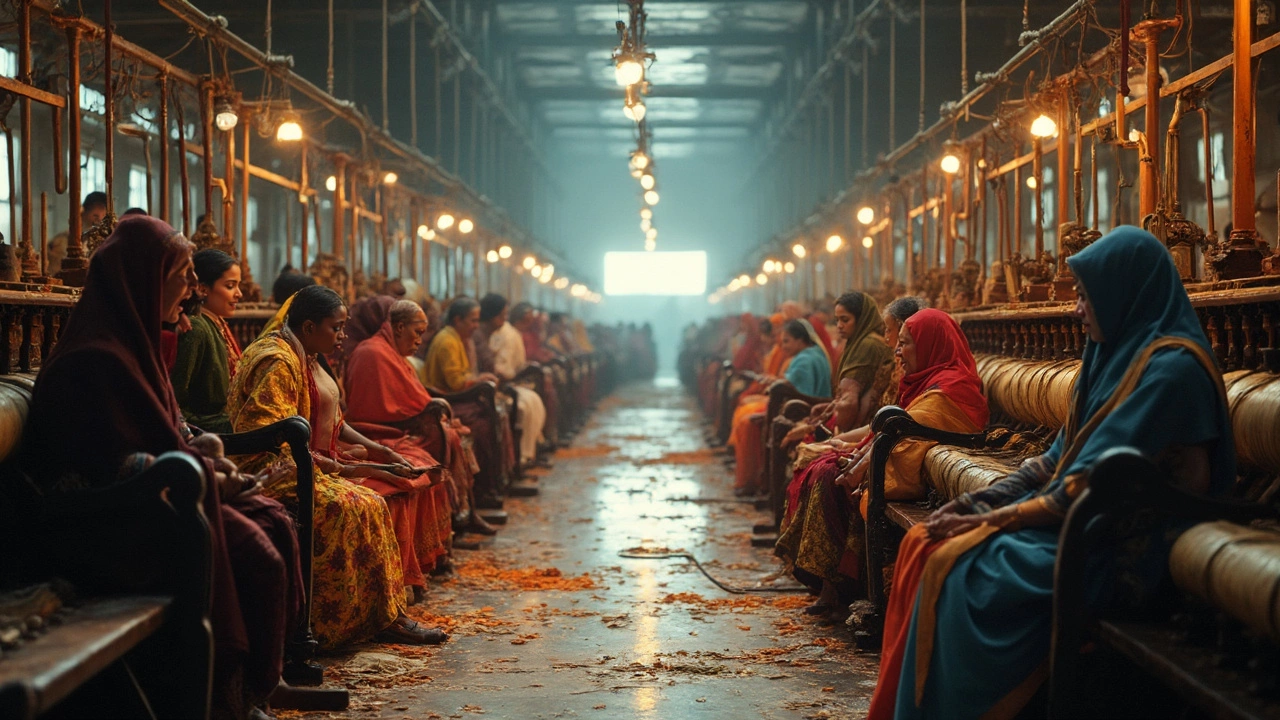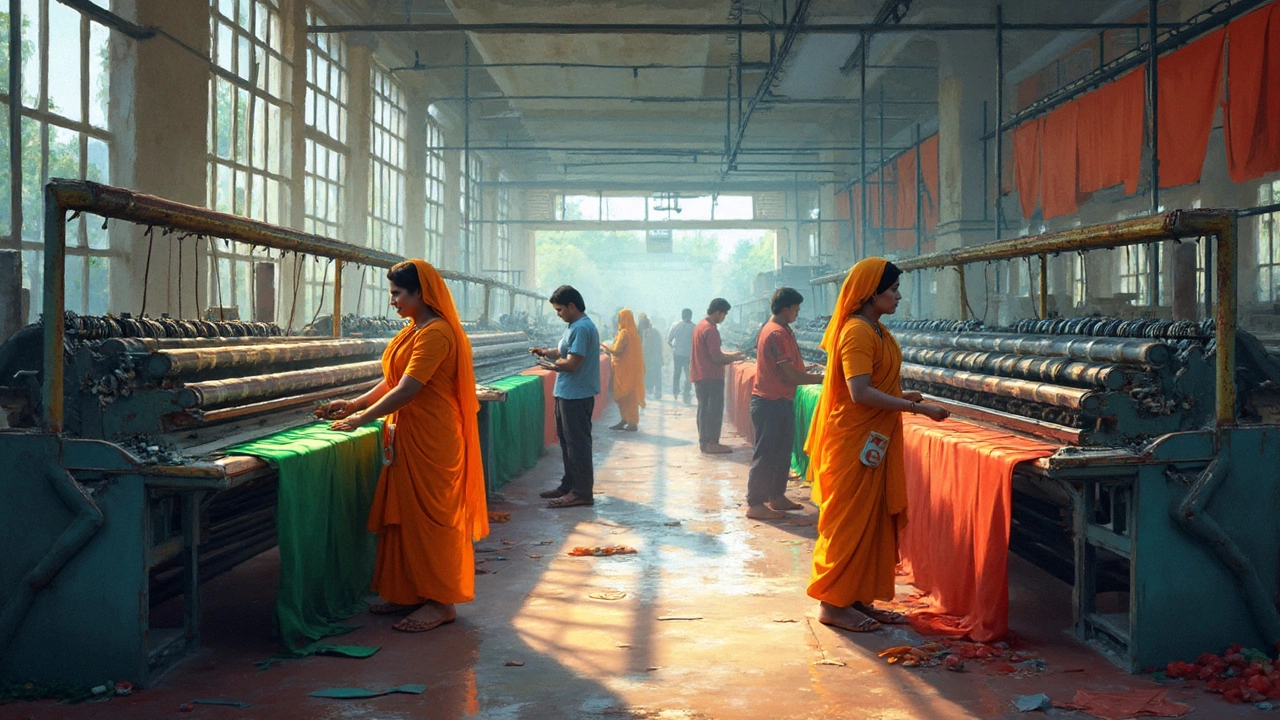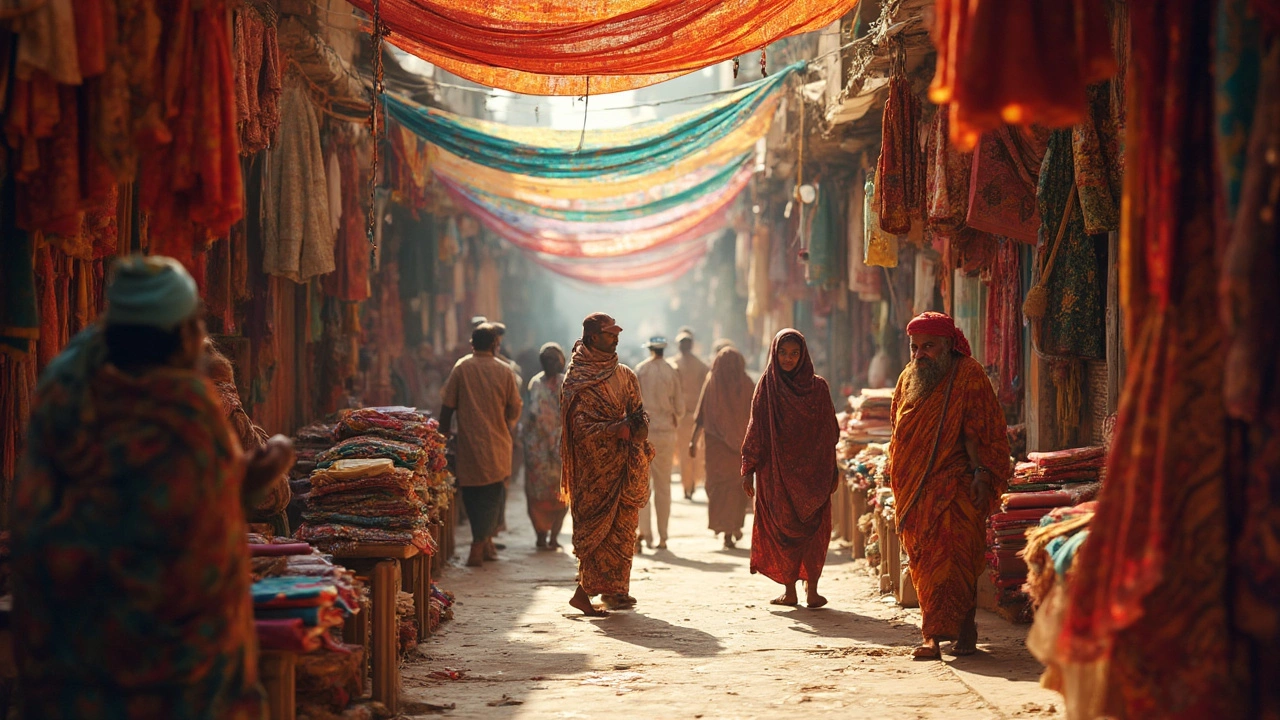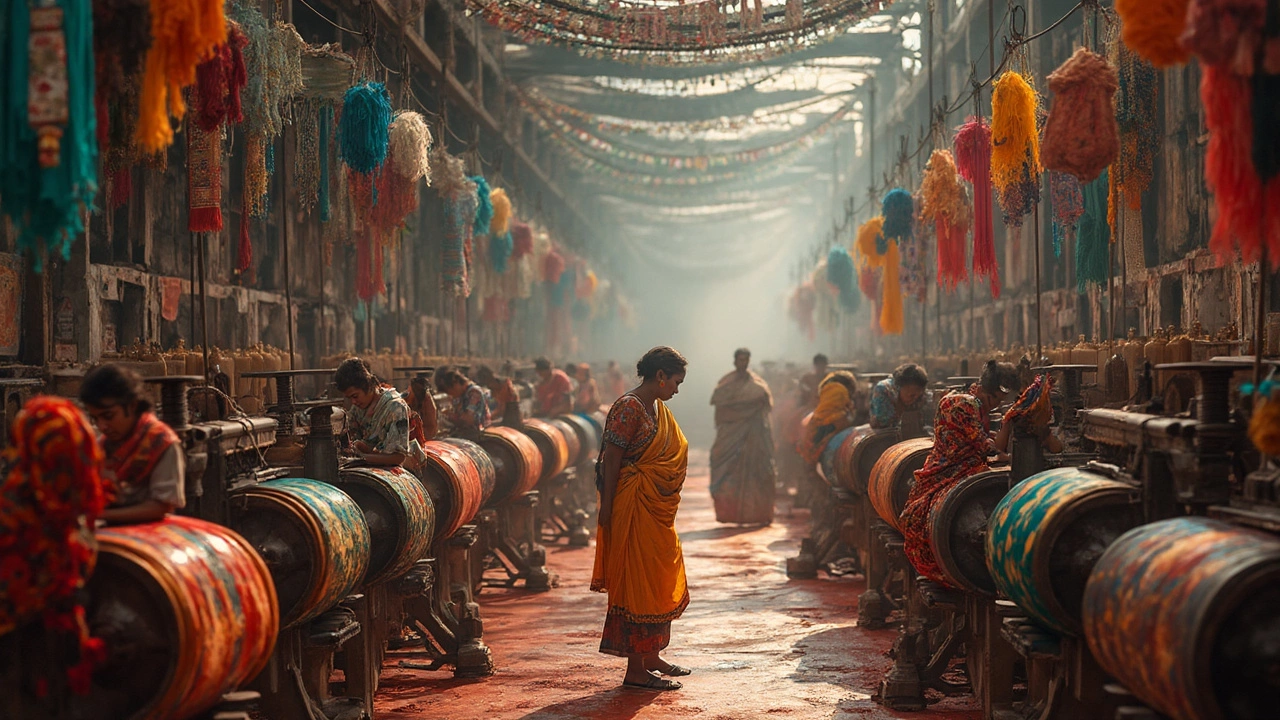- India's Furniture Manufacturing Industry Set for Growth Dec 10, 2024
- Navigating the Path to Small Scale Manufacturing Success Dec 22, 2024
- Where Does CVS Get Their Drugs From? Inside the Pharma Manufacturer Pipeline Apr 27, 2025
- Does Your Netflix India Subscription Work in the USA? Everything You Need to Know Jun 25, 2025
- Who Makes Honda Engines in India? The Real Manufacturer Behind the Power Nov 17, 2025
Textile Manufacturing in India: Hubs, Costs & 2024 Trends
India’s textile landscape is massive, and it’s changing faster than you might think. Whether you’re hunting for a reliable supplier, eyeing a new factory location, or just curious about why a shirt made in Surat feels different from one out of Tiruppur, this guide gives you the practical details you need right now.
Where the Textile Action Happens
Surat grabs the spotlight as the largest textile city in the country. Its blend of modern mills and traditional weaving units means you can source everything from plain cotton to high‑end silk in one place. If you’re after bright, patterned fabrics, Gujarat’s bandhani and Patola workshops still lead the way, offering hand‑crafted pieces that fetch premium prices. Meanwhile, Tamil Nadu’s Tiruppur is the go‑to for knitwear, especially sports apparel, because of its high‑speed looms and export‑ready infrastructure.
These hubs aren’t just about geography—they’re ecosystems. Manufacturers benefit from clustered services: finance, logistics, and skilled labor are all nearby, cutting down lead times and cost. The government’s recent textile policies also throw in tax breaks and subsidies, making it easier for newcomers to set up shop.
Starting or Scaling Your Textile Business
If you’re planning a small unit, the upfront cost can be broken down into three main buckets: machinery, labor, and location. A basic weaving line for a boutique operation starts around INR 10‑15 lakhs, while a fully automated dyeing unit can push the budget past INR 50 lakhs. Labor costs vary by state—Gujarat and Maharashtra tend to be a bit higher, but they also bring experienced weavers who can handle intricate designs.
Don’t forget the hidden expenses: power consumption, water treatment, and compliance with environmental norms. Investing in energy‑efficient machines and recycling water not only saves money in the long run but also aligns with the sustainability push that’s reshaping the industry in 2024.
When it comes to sourcing raw material, consider local cotton farms in Maharashtra for cost‑effective, high‑quality yarn, or explore silk farms in Karnataka if you need premium threads. Building a direct relationship with growers can lock in prices and assure quality, bypassing middlemen.
Finally, keep an eye on market trends. The 2024 outlook points to a rise in eco‑friendly fabrics, digital printing, and AI‑driven inventory management. Companies that adopt these technologies early are seeing faster turnaround and higher margins. If you’re unsure where to start, look at case studies from leading Indian manufacturers who have successfully integrated digital tools into their production lines.
Bottom line: India offers a blend of traditional craftsmanship and cutting‑edge tech that can suit any textile ambition. Pick the right hub, budget for the essentials, and stay ahead of the sustainability curve—you’ll be set to turn fabric ideas into profitable reality.
Which Country Has the Highest Demand for Indian Clothes?
- Aarav Sekhar
- Dec 1, 2025
The United States has the highest demand for Indian clothes, importing over $3.2 billion in 2024. Driven by cultural appreciation, sustainability, and fashion trends, Indian textiles are now part of everyday American style.
What Is India's New Textile Policy? Key Changes and How It Affects Manufacturers
- Aarav Sekhar
- Nov 18, 2025
India's new textile policy aims to boost exports to $100 billion by 2030 through cash incentives, seven new textile parks, and support for small manufacturers. Learn how it works and who benefits.
Export Garments from India to USA: 2025 Step‑by‑Step Guide
- Aarav Sekhar
- Oct 24, 2025
Step‑by‑step guide for Indian garment exporters to ship clothing to the USA. Covers HS codes, documentation, Incoterms, customs clearance, financing, and common pitfalls.
Surat: India's Top Textile City - Which City Leads the Industry?
- Aarav Sekhar
- Oct 2, 2025
Surat reigns as India's biggest textile hub, outpacing Ahmedabad, Coimbatore and Tirupur in turnover, employment and exports. Learn why the city leads and what challenges lie ahead.
Expensive Fabrics in India: What Makes Them Costly?
- Aarav Sekhar
- Jun 8, 2025
Which fabrics top the price charts in India, and why do they cost so much? This article breaks down the most expensive textiles, highlighting what sets them apart. You'll learn what drives the price—whether it's rare materials, skilled craftsmanship, or tradition. Discover which regions in India are hotspots for luxury fabric making. Get practical tips if you're thinking of buying or investing in high-end cloth.
Textile Capital of India: Where the Fabric Magic Happens
- Aarav Sekhar
- May 27, 2025
Trying to find the main hub of the Indian textile world? This article digs into which city owns the title of 'textile capital of India' and why. You'll discover how it gained this fame, what makes its textiles stand out, and what the actual working life looks like there. We’ll also show you where the real manufacturing action happens and give you tips if you’re looking to connect with suppliers or start your own textile journey. Concrete info, no fluff—just what you need to know about India’s textile powerhouse.
Gujarat Famous Cloth: The Story Behind India's Textile Powerhouse
- Aarav Sekhar
- May 25, 2025
Gujarat is a giant in the Indian textile scene, best known for its colorful and creative fabrics like bandhani and Patola. This article breaks down what makes Gujarat’s cloth unique, from the traditional techniques used to their global impact. Get familiar with must-know textile hotspots and find out which types of cloth you should check out if you want a real taste of Gujarat. Whether you're a buyer, a traveler, or just curious, you'll walk away with handy tips and surprising facts. The journey of Gujarat’s textiles is more than just fabric—it's full of culture, innovation, and craft.
Largest Textile City in India: Why Surat Tops the List
- Aarav Sekhar
- May 4, 2025
Curious about where India’s textile magic happens? This article digs into the unmatched scale and buzz of Surat—the country’s biggest textile city. Discover why Surat has become the go-to hub for manufacturers, exporters, and buyers alike. Learn how technology, innovation, and community power up this industry. Get some practical tips if you want to source fabric or launch a textile business in Surat.
Indian Textile Industry Collapse: What Really Happened and What It Means for Manufacturers
- Aarav Sekhar
- Apr 23, 2025
The Indian textile industry, once a global powerhouse, has seen a dramatic downturn in recent years. The decline wasn't caused by one thing, but a perfect storm of rising costs, outdated technology, and tough competition from abroad. Job losses hit millions, and many small manufacturers struggled to survive. This article breaks down exactly why the industry collapsed, who got hurt, and what can be done to turn things around. If you’re in textiles or just curious about big shifts in global manufacturing, you’ll find facts and practical tips here.
Who is the King of Textiles?
- Aarav Sekhar
- Apr 16, 2025
Uncover the dynamic world of India's textile industry, where historical roots meet modern innovation. Explore major players shaping the sector and discover why India holds a pivotal role in global textile production. With insights into the balance between tradition and technology, this article offers a detailed look at the factors that place these manufacturers in a league of their own.
Exploring India's Textile Hub: Unveiling the World Capital
- Aarav Sekhar
- Mar 26, 2025
Discover why India is often hailed as the textile capital of the world. This exploration dives into the historical significance, modern advancements, and economic impact of India's flourishing textile industry. With insights on major manufacturing hubs like Surat and Tiruppur, the piece also highlights challenges and forward-looking trends in sustainable practices. Whether you're an industry insider or a curious reader, this article sheds light on India's vital role in the global textile landscape.
How Many Textile Manufacturing Companies Are There in India?
- Aarav Sekhar
- Feb 25, 2025
India's textile manufacturing scene is massive, with thousands of companies scattered across the country. This article dives into the details, examining how these companies contribute to the economy, which regions are the most textile-centric, and what this means for both local and global markets. With a rich history and bright future, India's textile industry is a cornerstone of its economic landscape, providing invaluable employment opportunities and leading innovation. Whether you're a textile enthusiast or just curious, this piece offers an insightful look into a vital sector.

